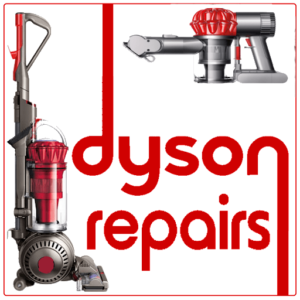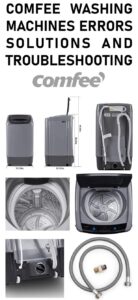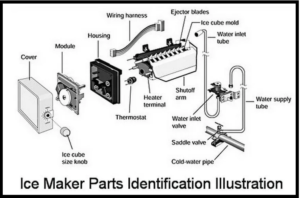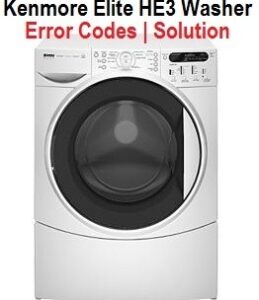The bathroom is a focal piece of any working family. Having a clogged or slow depleting toilet can carry a home to a halt. It can turn into a genuinely unpleasant issue, particularly on the off chance that you don’t keep an eye on it rapidly and the circumstance deteriorates. At the point when channels and toilets start to give indications that they aren’t working as expected, you should get a move on be proactive.
How to Unclog a Slow Draining Toilet
If you notice that your toilet is slow to drain, here are some do-it-yourself exercises you can implement before calling in the professionals.
1. Hot Water and Liquid Soap
The old boiling water, fluid cleanser stunt may appear to be unusual, yet is generally successful relying upon the size of the toilet blockage and obstruction. It depends on a beautiful straightforward idea. On the off chance that you grease up the clogged area and hit it with some genuinely heated water, it will slacken the blockage so your latrine can flush properly once more.
- Start by warming up about a gallon of water on the oven. On the off chance that you don’t have a pot that holds that much water, you can focus on less. Interestingly, it is adequately hot, the nearest to bubbling without placing yourself at serious risk. You should simply get the heated water securely from the oven to the latrine bowl.
- While your water is warming up, snatch some fluid cleanser. It doesn’t need to be dishwashing cleanser, as it is just being utilized as an ointment. Shower gel or cleanser will get the job done as well. Make sure to utilize the fluid cleanser minimalistically so you don’t end up with a washroom brimming with bubbles.
- When your water is hot enough, put a couple of drops of soap in the toilet bowl. Then follow with the hot water, safely pouring into the toilet bowl.
- Permit it an opportunity to sit in the latrine bowl and work its way into the latrine channel. You may have to rehash these means to get the ideal result and totally clear the blockage. While this strategy is tedious and requires some tolerance, it is a successful method to get your toilet drain moving once more.
2. Plunger
The tried-and-true toilet plunger. Plunging your toilet has been the go-to method for decades when it comes to minor clogs. While it takes some effort, it gets the job done and it can work right away. You’ll want to grab a pair of rubber gloves if you have them for sanitary purposes, and protect your surrounding floors from overflow if the water line is too high.
How to Plunge a Toilet:
- The first plunge should be made gingerly. Plunging too hard the first time may result in water being blown all over the place, so proceed with caution.
- Once you create a firm suction between the bell of the toilet and your plunger, you are free to plunge vigorously.
- Maintaining the seal and suction, continue to plunge the toilet with consistent up and down movements. It may take up to 10 times before you see movement, so stick with it.
- If water runs low in the toilet bowl and it is going dry, try flushing your toilet to get some water flowing in the bowl again. Then continue to plunge until you clear the blockage.
3. Plumbing Snake
The plumbing snake is a more advanced method for fixing your slow draining toilet. A plumbing snake is a very flexible tool and has a substantially longer reach compared to your typical toilet cleaning wire. Not everyone has a plumbing snake just lying around the house, so if you don’t, you may want to invest in one for the next time this happens.
How to Use a Plumbing Snake:
- Push the snake down into the drain of your toilet until you feel some push back, which would indicate you’ve reached the clog or obstruction.
- Once you have made contact with the obstruction, you’ll start to use the crank on the top to break the obstacle into smaller pieces.
- As soon as you twist and poke your way through the obstruction and break up the clog simply flush and you should be good to go. If this doesn’t work and you’re still having an issue, contact the trusted professionals at Detour Plumbing.
4. Wire Coat Hanger
If you don’t have a plumbing snake handy, a simple wide hanger may get the job done. While it may not have the same reach or strength of a snake, it is effective in dislodging obstacles. Start by unraveling the wire coat hanger and stretching it out into one long piece. Leave a bit of a scoop on the end of the hanger, this is to cling to the dishrag. Cover the slightly curved end you are sticking into the drain of the toilet with a dishrag and secure it with some duct tape. Push the end covered in a rag into the drain of the toilet. Push and wiggle around until you feel the clog. Apply more pressure and push the debris to free it. Lastly, flush your toilet and all should be well.
5. Enzyme Cleaning Products
If the clog is persistent and you can rule out that it isn’t something like a child’s toy lodged in the drain, you may want to consider enzyme cleaning products that are made to break down organic matter in pipes and drains. These draining cleaning products can be purchased at your hardware store or online. Enzyme cleaning products are environmentally friendly, unlike their chemical-based counterparts. Carefully read the instruction before proceeding. Follow them to the letter so you don’t cause any undue harm to your plumbing system.
6. Chemical Drain Cleaning Products
While chemical draining cleaning products may seem like the easiest solution, they may not be the best solution. Unlike enzyme products, there can be toxic chemical reactions that can occur if these products come in contact with other materials. You’ll absolutely want to open a window before using them and just like enzyme drain cleaning products, as the fumes that come from these products can be harmful to small children and pets. Follow the directions that are specific to that brand. Read the warnings, side effects and other chemical interactions to avoid.
7. DIY Drain Cleaners
Do-it-yourself drain cleaners are a great solution for minor clogs. For a complete list of household ingredients that you’ll need, and how to use them, check out our blog on ‘Drain Cleaners You Can Make at Home’ for a full step-by-step guide.
What NOT to Do When Your Toilet Is Clogged
Now that you have reviewed your options and decided on which plumbing hack works best for you, let’s take a moment to remind ourselves of what NOT to do when your toilet is clogged. Here is a list of no-nos.
- Keeping Toilet Lid Up – This is especially important when you have small children in the household. Keeping the toilet seat and lid down will prevent curious kids from taking their toys for a swim.
- Using Drain Cleaning Chemicals – As we stated before, chemicals aren’t always the best solution. Not only are you flushing toxic chemicals into the water system, but they can actually make clogs worse the more often you use them. Chemical drain cleaners can also be harmful to some toilet bowls by eating away at the coating of your toilet and piping.
When in Doubt, Call Detour Plumbing Los Angeles
For tough clogs, reach one of the confided in handymen at Detour Plumbing. We are arranged to work in your home under the exacting government and coronavirus CDC guidelines, taking each precaution necessary to keep you and your family protected during the current COVID-19 crisis. We are authorizing added security safeguards to guarantee our clients and their home surroundings are left undisturbed.
You May Also Like

Universal Air Conditioner Remote Control Codes
Read More

How to Fake Cable Provider Login forever work
Read More

Dyson Repairs Near Me | Servicing In London & Home Counties
Read More

How To Fix Samsung TV Volume Stuck ?
Read More

Why Won’t My TV Connect to WIFI | How To Fix?
Read More

Hulu Login not working | Hulu Activate Not Working
Read More

Comfee Washing Machine Setup And Errors Codes
Read More

Samsung ice maker freezing up | How To Force Defrost Mode
Read More

Whirlpool ice maker not working – How To Troubleshoot?
Read More

Kenmore Elite HE3 Washer Error Codes | Solution
Read More


